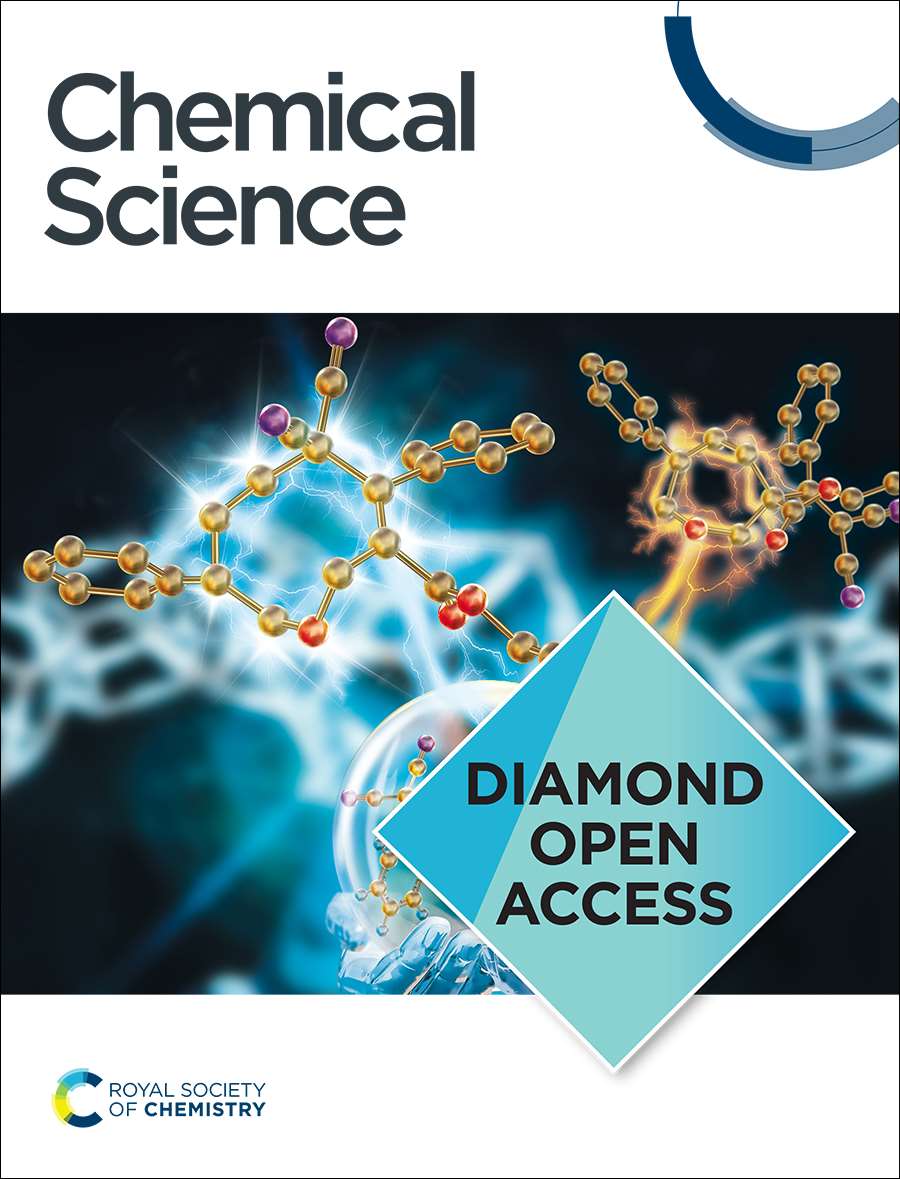Anisotropy-Dependent Chirality Transfer from Cellulose Nanocrystals to β-FeOOH Nanowhiskers
IF 7.6
1区 化学
Q1 CHEMISTRY, MULTIDISCIPLINARY
引用次数: 0
Abstract
Chiral iron oxides and hydroxides have garnered considerable interest owing to the unique combination of chirality and magnetism. However, it remains elusive how to improve their g-factor, which is critical for optimizing the chiral magneto-optical response. We demonstrated that the g-factor of β-FeOOH could be boosted by enhancing the anisotropy of nanostructures during a biomimetic mineralization process. Cellulose nanocrystals were used as both mineralization templates and chiral ligands, driving oriented attachment of β-FeOOH nanoparticles and inducing the formation of highly aligned chiral nanowhiskers. Circular dichroism spectra and time-dependent density-functional theory proved induced chirality transfer from cellulose nanocrystals to β-FeOOH through the ligand-metal charge transfer. Interestingly, chirality transfer is significantly enhanced during the elongation of nanowhiskers. A nearly 34-fold increase in g-factor was observed when the aspect ratio of nanowhiskers increased from 2.6 to 4.4, reaching a g-factor of 5.7*10-3, superior to existing dispersions of chiral iron oxides and hydroxides. Semi-empirical quantum calculations unveiled that such remarkable improvement of g-factor could be attributed to the enhanced dipolar interactions. Cellulose nanocrystals exert vicinal actions on highly anisotropic β-FeOOH with a large dipole moment, increasing structural distortions of coordination geometry. This mechanism is accorded with the one-electron theory's static coupling principle, highlighting the large interaction potential from supramolecular templates. Furthermore, paramagnetic β-FeOOH nanowhiskers alter the magnetic anisotropy of cellulose nanocrystals, leading to a reverse response of helical photonic films to magnetic fields, promising for the real-time optical modulation.纤维素纳米晶向β-FeOOH纳米须的各向异性手性转移
由于手性和磁性的独特结合,手性氧化铁和氢氧化物引起了人们极大的兴趣。然而,如何提高它们的g因子仍然是难以捉摸的,这是优化手性磁光响应的关键。我们证明了在仿生矿化过程中,β-FeOOH的g因子可以通过增强纳米结构的各向异性来提高。纤维素纳米晶体作为矿化模板和手性配体,驱动β-FeOOH纳米颗粒的定向附着,诱导形成高度排列的手性纳米须。圆二色光谱和时间依赖的密度泛函理论证明了纤维素纳米晶体通过配-金属电荷转移诱导手性转移到β-FeOOH。有趣的是,手性转移在纳米晶须的延伸过程中显著增强。当纳米晶须的纵横比从2.6增加到4.4时,g因子增加了近34倍,达到5.7 × 10-3,优于现有的手性氧化铁和氢氧化物分散体。半经验量子计算揭示了g因子的显著改善可能归因于增强的偶极相互作用。纤维素纳米晶体对高各向异性的β-FeOOH具有较大的偶极矩作用,增加了配位几何的结构畸变。这一机制符合单电子理论的静态耦合原理,突出了超分子模板的巨大相互作用潜力。此外,顺磁性β-FeOOH纳米晶须改变了纤维素纳米晶体的磁各向异性,导致螺旋光子薄膜对磁场的反向响应,有望用于实时光学调制。
本文章由计算机程序翻译,如有差异,请以英文原文为准。
求助全文
约1分钟内获得全文
求助全文
来源期刊

Chemical Science
CHEMISTRY, MULTIDISCIPLINARY-
CiteScore
14.40
自引率
4.80%
发文量
1352
审稿时长
2.1 months
期刊介绍:
Chemical Science is a journal that encompasses various disciplines within the chemical sciences. Its scope includes publishing ground-breaking research with significant implications for its respective field, as well as appealing to a wider audience in related areas. To be considered for publication, articles must showcase innovative and original advances in their field of study and be presented in a manner that is understandable to scientists from diverse backgrounds. However, the journal generally does not publish highly specialized research.
 求助内容:
求助内容: 应助结果提醒方式:
应助结果提醒方式:


